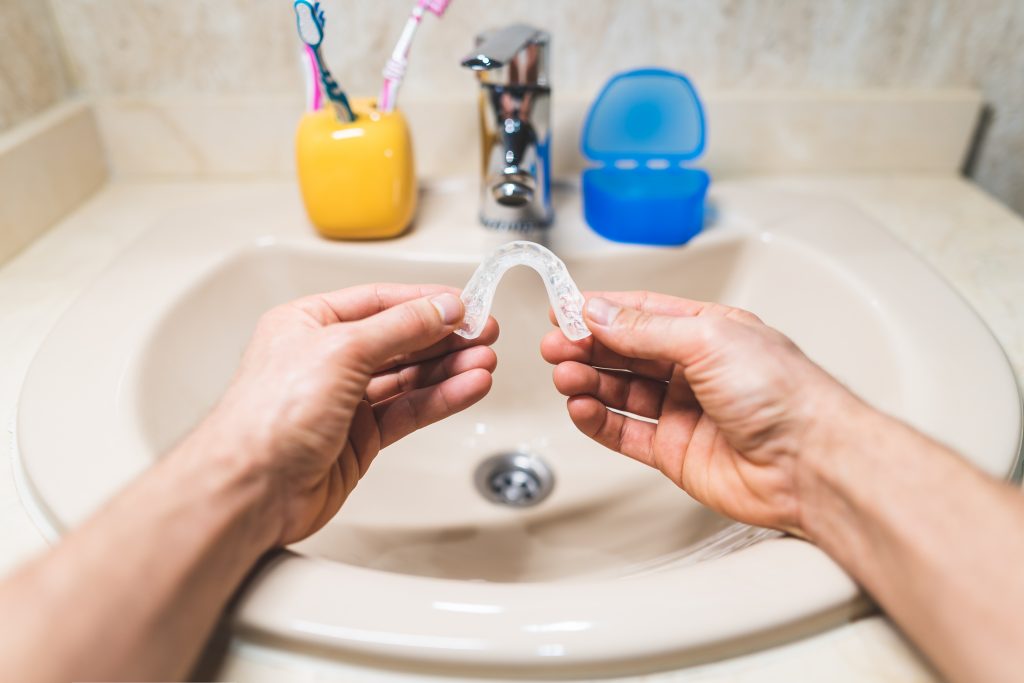Summer Smiles Discount
Save Up to 15% On 1 Treatment Item!
DOWNLOAD COUPONIf you are considering straightening your teeth with braces, you have several treatment options to choose from. Many adults opt for invisible clear braces, which use a series of aligners to gently straighten their teeth. Compared to traditional metal braces, invisible braces provide a comfortable, flexible way to improve your smile without letting anyone know that you are receiving treatment.
Your Penn Dental Family Practice orthodontist will discuss all of your treatment options, and be happy to answer your questions about invisible clear braces or any other orthodontic treatments. In the meantime, though, here are answers to some of the most common patient questions and information you should know before choosing a treatment option.
 If you’re like many Penn Dental Family Practice patients, the idea of straightening your smile in as few as 12 months without needing to wear metal braces is appealing. Many adults are concerned about the appearance of traditional metal braces, especially in professional environments, not to mention the dietary restrictions and regular adjustments. When you’re busy managing your family, home, and career, it can be challenging to make it into the orthodontist’s office every few weeks for an adjustment.
If you’re like many Penn Dental Family Practice patients, the idea of straightening your smile in as few as 12 months without needing to wear metal braces is appealing. Many adults are concerned about the appearance of traditional metal braces, especially in professional environments, not to mention the dietary restrictions and regular adjustments. When you’re busy managing your family, home, and career, it can be challenging to make it into the orthodontist’s office every few weeks for an adjustment.
Invisible clear braces eliminate many of those hassles while still giving you the straight, bright smile you want. But even with the additional ease, there are still many important questions:
When you opt for invisible clear braces, your teeth are straightened using a series of clear, BPA-free plastic aligners. During your initial consultation, the orthodontist takes X-rays and impressions. These images are used to create digital models of your teeth now and set goals for the aligners.
Your treatment plan is based on these digital models. You receive a series of custom-made aligners, which slowly and gently move your teeth into position. Each aligner is worn for two weeks, at which point you’ll switch to the next aligner in the series.
Depending on your goals and how much your teeth need to be straightened, the process can take anywhere from six to 24 months. Most people see results in about a year, though.
Some patients report feeling minor discomfort while wearing aligners. In most cases, that pressure or tenderness is limited to the first day or two after switching to a new aligner. The aligners put pressure on your teeth to move them into a new position, so this is normal.
Rarely, the edges of the clear aligners may irritate your gums, tongue, or the inside of your cheeks. In fact, you’re less likely to experience irritation from invisible clear braces than metal ones. On the off chance you do have discomfort, your orthodontist can make adjustments to reduce irritation.
 Only your orthodontist can determine whether invisible clear braces will correct your specific issues. The good news is that aligners have advanced considerably in recent years. In the past, they were strictly limited to correcting cosmetic issues, like rotated teeth. Today’s clear aligners are capable of addressing structural issues in your mouth and treating more significant problems.
Only your orthodontist can determine whether invisible clear braces will correct your specific issues. The good news is that aligners have advanced considerably in recent years. In the past, they were strictly limited to correcting cosmetic issues, like rotated teeth. Today’s clear aligners are capable of addressing structural issues in your mouth and treating more significant problems.
Even if your orthodontist believes that invisible braces will work for you, there are additional factors to consider. Clear aligners require a commitment to wearing them for at least 22 hours a day, only removing them for eating, drinking, and oral hygiene. This includes sleeping with the aligners in. If you don’t wear them long enough, you can set the treatment back days or weeks.
Also similar to metal braces, excellent oral hygiene is a must when using aligners. The American Association of Orthodontists (AAO) notes that not only is it crucial for your teeth to be clean when you put your aligners in, but you also need to avoid sugary or acidic food and drink while wearing them. Drinking soda or sports drinks, for instance, while wearing your aligners can cause the liquid to seep behind them and increase the risk of stains or decay.
As mentioned previously, your orthodontist will make the judgement about the best treatment for you. However, some conditions might mean you aren’t good candidates for treatment with invisible clear braces. If your jaw is significantly misaligned, for example, clear braces most likely won’t be effective. The same is true if you have a severe overbite,
If you’re not happy with your smile, you may be tempted to get clear aligners from a direct-to-consumer provider, without seeing an orthodontist. Although these treatments may seem affordable and convenient, the AAO and the American Dental Association do not recommend “DIY orthodontics.” Without supervision by a qualified orthodontist, who has more than 3,700 hours of additional training beyond dental school, mail-order aligners can potentially worsen problems with your teeth or create new ones.
When a Penn Dental Family Practice orthodontist oversees your braces treatment, you can rest assured that you’re receiving the correct treatment. While you may have less frequent office visits than with metal braces, regular check-ups to ensure the treatment is on track are a part of the process. These visits ensure you achieve the healthy, straight smile you want.
If you are considering any orthodontic treatment, whether clear aligners or traditional braces, download our free cosmetic dentistry guide and learn more about everything Penn Dental Family Practice offers. You can also schedule a consultation by clicking here or calling (215) 898-PDFP (7337).
Get Your Appointment Now
We look forward to serving you and your family.